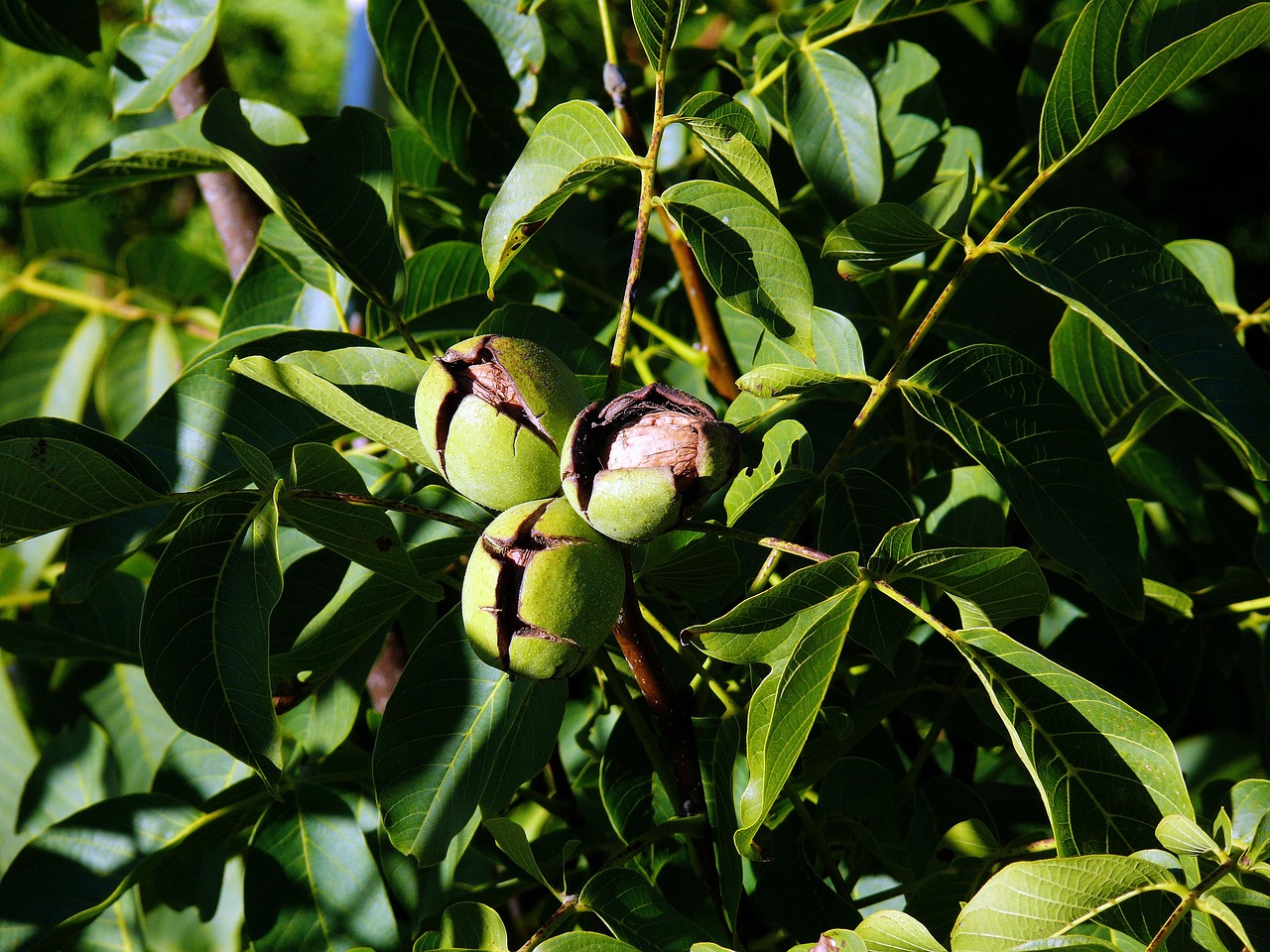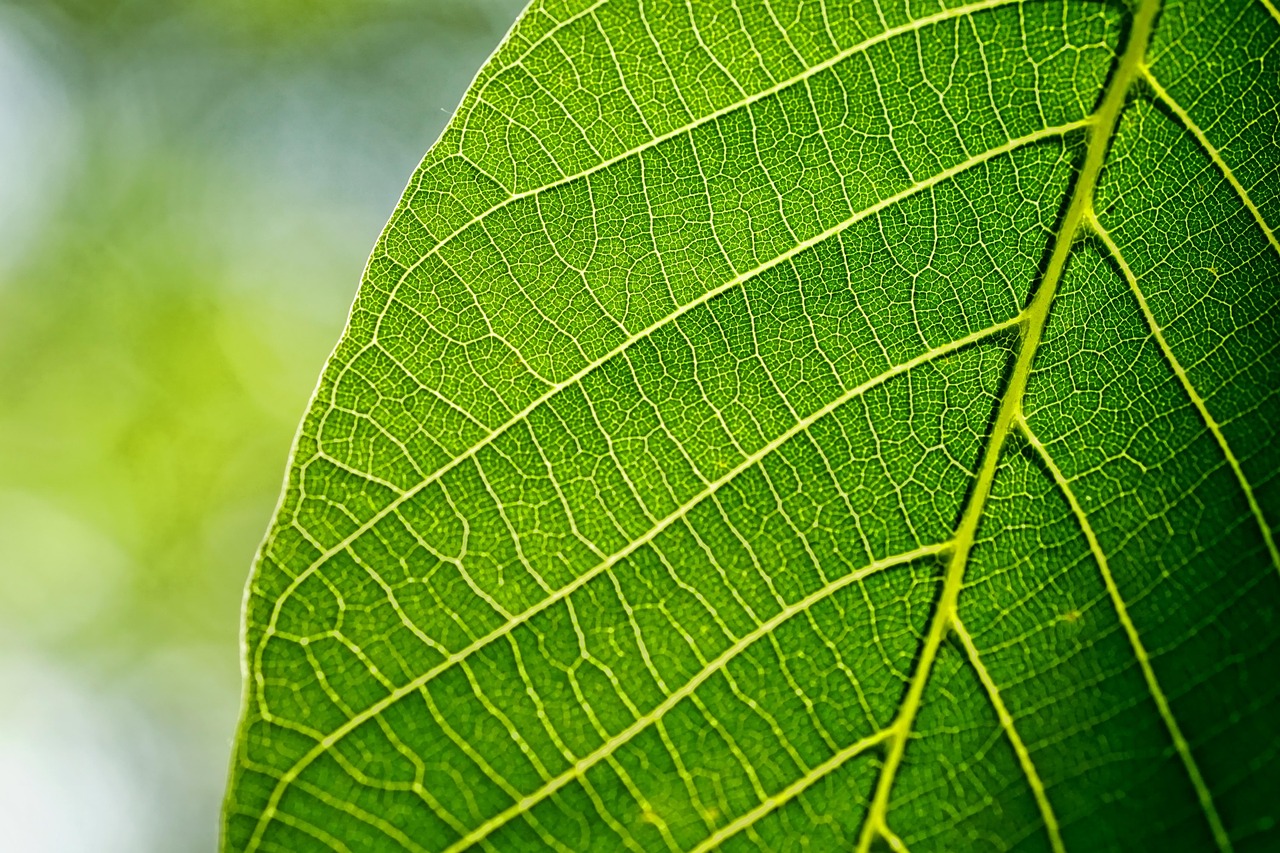Learn key pruning techniques and timing to promote healthy walnut tree leaves. Proper pruning enhances air circulation, light penetration, and disease prevention, supporting vigorous growth and optimal nut production. Follow expert-approved methods to maintain your walnut tree’s health and ensure vibrant foliage for years to come.
Walnut trees are known for their majestic stature and valuable wood. They are also prized for their delicious nuts. However, like all trees, they require proper care to thrive. One of the most critical care practices is pruning. Pruning not only shapes the tree but also plays a significant role in maintaining its health. It helps in managing the tree’s growth and ensures that the leaves remain healthy.

Understanding the importance of pruning walnut trees begins with recognizing their growth patterns. Walnut trees can grow quite large, often reaching heights of 100 feet or more. Their broad canopies can become dense over time. This density can lead to various issues, such as poor air circulation and limited sunlight penetration. Both of these factors can negatively impact leaf health, making pruning a necessary task for any walnut tree owner.
Benefits of Pruning Walnut Trees
Pruning walnut trees offers numerous benefits that extend beyond aesthetics. Here are some key advantages:
- Improved Air Circulation: Pruning removes excess branches that may obstruct airflow. This helps reduce the humidity around the leaves, which can prevent fungal diseases.
- Enhanced Light Penetration: By thinning out the canopy, more sunlight reaches the inner leaves. This is crucial for photosynthesis and overall leaf health.
- Pest Management: Regularly pruning your walnut tree can help identify and remove infested branches, reducing the likelihood of pests spreading throughout the tree.
- Structural Integrity: Pruning helps maintain a strong, balanced structure. This reduces the risk of branches breaking under their own weight, especially during storms.
- Encourages New Growth: Cutting back older wood stimulates new growth, leading to more vigorous leaves and potentially better nut production.
In addition to these benefits, it is worth noting that improper pruning can lead to significant problems. Over-pruning or pruning at the wrong time can harm the tree. Therefore, understanding when and how to prune is essential for maximizing benefits while minimizing risks.

When to Prune Walnut Trees
The timing of pruning is crucial for walnut trees. Generally, the best time to prune is during late winter or early spring before the tree begins to leaf out. This timing allows the tree to heal quickly and minimizes sap loss.
| Time of Year | Recommended Activity |
|---|---|
| Late Winter | Perform major pruning cuts. |
| Early Spring | Light pruning for shaping and removing dead branches. |
| Summer | Avoid heavy pruning; focus on maintenance. |
| Fall | Avoid pruning; trees are preparing for dormancy. |
During late winter, the tree is dormant, making it an ideal time to make significant cuts without stressing the plant. Early spring allows for light adjustments as new growth emerges. Summer should focus on maintenance rather than major cuts, as this can cause stress to the tree. Pruning in the fall should be avoided entirely since it can interfere with the tree’s natural dormancy cycle.
Tools Required for Pruning
Having the right tools is essential for effective pruning. Using sharp and clean tools minimizes damage to the tree and helps prevent disease transmission. Here are some tools you may need:

- Pruning Shears: Ideal for small branches and delicate cuts.
- Loppers: Useful for cutting thicker branches that are too large for shears.
- Saw: A handsaw or chainsaw may be required for larger limbs.
- Gloves: Protect your hands from sharp tools and potential allergens.
- Lopper Pole: A long-handled tool for reaching high branches.
Before starting your pruning session, ensure all tools are sharp and sanitized. This preparation helps facilitate clean cuts and avoids introducing diseases into the tree.
Understanding these basic principles of walnut tree pruning will set a solid foundation for healthier leaves and a robust tree overall. The right techniques can lead to an abundance of vibrant foliage and successful nut production in the years to come.
Pruning Techniques for Walnut Trees
To ensure walnut trees flourish, employing the right pruning techniques is essential. Various methods are suited for specific goals, whether it’s to remove dead wood, shape the tree, or promote new growth. Understanding these techniques can greatly enhance the health and appearance of your walnut tree.

Types of Pruning
There are several types of pruning techniques that can be utilized on walnut trees. Each serves a distinct purpose:
- Thinning: This method involves selectively removing branches to improve light penetration and air circulation. It helps maintain an open canopy.
- Heading: Heading cuts shorten a branch’s length without removing it entirely. This encourages new growth from the remaining buds.
- Cleaning: Cleaning involves removing dead, damaged, or diseased branches. This is crucial for preventing disease spread and maintaining overall tree health.
- Shaping: Shaping is used to guide the tree’s growth direction. This is particularly useful for young trees to establish a strong framework.
Step-by-Step Pruning Process
Following a systematic approach can make the pruning process more effective. Here is a simple step-by-step guide:
- Assess the Tree: Before pruning, evaluate the tree’s structure. Look for dead or diseased branches, as well as areas where the canopy is too dense.
- Select the Right Time: As mentioned earlier, late winter or early spring is ideal for major pruning activities.
- Make Clean Cuts: Use sharp tools to make clean cuts at a slight angle. This helps water runoff and reduces the risk of rot.
- Avoid Topping: Never top a walnut tree. This practice can lead to weak growth and increase susceptibility to disease.
- Step Back: Periodically step back to view your work. This ensures that you maintain the desired shape and balance of the tree.
Common Mistakes to Avoid
Even experienced gardeners can make mistakes while pruning walnut trees. Being aware of common pitfalls can help ensure successful outcomes:
- Over-Pruning: Removing too many branches at once can stress the tree and hinder its growth. Aim to remove no more than 25% of the canopy in one session.
- Pruning at the Wrong Time: Pruning during late fall or summer can expose the tree to stress and potential pest infestations. Always stick to recommended timelines.
- Poor Tool Maintenance: Using dull or dirty tools can harm the tree and introduce diseases. Regularly sharpen and sanitize your tools.
- Ignoring Tree Health: Always assess the tree’s overall health before deciding to prune. If a tree is stressed due to drought or disease, consider postponing pruning.
Understanding Tree Growth Patterns
To prune effectively, it is essential to understand how walnut trees grow. Walnut trees produce new growth primarily from buds located on existing branches. By recognizing where these buds are located, you can make strategic cuts that will encourage healthier leaves and new growth.
The overall growth habit of walnut trees can be described as follows:
| Growth Stage | Description |
|---|---|
| Juvenile Stage | The tree focuses on establishing roots and height. Minimal pruning is necessary at this stage. |
| Mature Stage | The tree reaches its full height. Pruning should focus on shaping and maintaining health. |
| Declining Stage | The tree may show signs of disease or stress. Focus on cleaning out deadwood and assessing overall health. |
Understanding these stages helps determine how aggressive your pruning should be at different points in the tree’s life cycle. As a walnut tree matures, it will require different care strategies compared to when it is young.
The Role of Fertilization After Pruning
After pruning, providing appropriate nutrients can significantly impact recovery and growth. Fertilization supports new growth and helps the tree recover from any stress caused by pruning.
Selecting the right fertilizer is essential. A balanced fertilizer with equal parts nitrogen, phosphorus, and potassium is ideal. Applying fertilizer in spring after pruning can provide nutrients during the growing season.
- Nitrogen: Encourages leaf and stem growth.
- Phosphorus: Supports root development and flower production.
- Potassium: Enhances overall plant health and disease resistance.
In addition to chemical fertilizers, organic options such as compost or well-rotted manure can also be beneficial. These natural amendments improve soil structure while providing essential nutrients.
By understanding proper pruning techniques, avoiding common mistakes, and supporting your walnut tree’s recovery through fertilization, you can effectively promote healthier leaves and overall tree vitality.
Pest and Disease Management in Walnut Trees
Maintaining the health of your walnut tree goes beyond pruning and fertilization. Effective pest and disease management is crucial for ensuring that your tree produces healthy leaves and nuts. Various pests and diseases can affect walnut trees, making it essential to be proactive in identifying and addressing these issues.
Common Pests
Walnut trees are susceptible to several pests that can damage their leaves, bark, and nuts. Here are some common pests to watch out for:
- Walnut Aphids: These small insects feed on the sap of walnut trees, causing leaves to curl and yellow. They can also produce a sticky substance known as honeydew, which attracts other pests.
- Walnut Husk Fly: The larvae of this fly burrow into the husks of walnuts, leading to reduced nut quality. They are most problematic during the nut ripening period.
- Spider Mites: These tiny arachnids thrive in hot, dry conditions. They cause stippling on leaves and can lead to leaf drop if not controlled.
- Scale Insects: These pests attach themselves to branches and leaves, sucking sap and weakening the tree. They may also encourage the growth of sooty mold.
Signs of Pest Infestation
Being able to identify signs of pest infestation early can help you take action before significant damage occurs. Look for the following symptoms:
- Yellowing or curling leaves
- Visible insects on leaves or branches
- Webbing between branches, indicating spider mites
- Sooty mold on leaves, a sign of honeydew production by aphids or scale insects
Disease Issues
In addition to pests, walnut trees can suffer from various diseases that affect leaf health. Some of the most common diseases include:
- Walnut Blight: This bacterial disease causes dark, sunken lesions on leaves and fruit. Affected trees often have reduced nut yield.
- Powdery Mildew: This fungal disease appears as a white powdery coating on leaves. It thrives in humid conditions and can stunt growth.
- Anthracnose: This fungal disease leads to leaf spots and can cause premature leaf drop. It typically affects younger foliage.
Preventive Measures
Taking preventive measures can significantly reduce the risk of pest infestations and diseases in walnut trees. Here are some effective strategies:
- Regular Inspections: Frequently check your tree for signs of pests or diseases. Early detection allows for timely intervention.
- Maintain Tree Health: Healthy trees are better able to resist pests and diseases. Ensure proper watering, pruning, and fertilization.
- Use Mulch: Apply organic mulch around the base of the tree to retain moisture and suppress weeds. This creates a healthier growing environment.
- Avoid Overcrowding: Ensure that your walnut tree has enough space from other plants to promote good air circulation and sunlight exposure.
Treatment Options
If you notice pest activity or disease symptoms, it’s essential to take action with appropriate treatment options. Here is a list of common treatments:
- Insecticidal Soap: This organic option is effective against soft-bodied pests like aphids and spider mites. Apply it directly to affected areas.
- Neem Oil: Derived from the neem tree, this natural pesticide disrupts the life cycle of many pests while being safe for beneficial insects.
- Copper Fungicides: Use these to control fungal diseases like walnut blight and powdery mildew. Follow label instructions for application rates.
- Bacterial Sprays: For walnut blight, consider using sprays that contain beneficial bacteria. They can help combat disease without harming the tree.
The Role of Environmental Conditions
The environment plays a significant role in the health of walnut trees. Factors such as soil quality, moisture levels, and temperature can influence both pest prevalence and disease outbreaks. Here are some key considerations:
- Soil Quality: Well-draining soil rich in organic matter is essential for healthy root systems. Conduct soil tests to determine nutrient levels and pH balance.
- Watering Practices: Consistent watering helps prevent stress that can make trees more susceptible to pests and diseases. Avoid overwatering, which can lead to root rot.
- Temperature Fluctuations: Extreme temperatures can weaken trees, making them vulnerable to infestations. Monitor local weather conditions and protect young trees during harsh weather.
By implementing preventive measures, recognizing signs of pests and diseases, and understanding the environmental conditions affecting your walnut trees, you can contribute significantly to their overall health. These practices will create a thriving environment for your walnut trees, ensuring they produce healthy leaves and plentiful nuts for years to come.
Additional Care Practices for Walnut Trees
To ensure the long-term health of walnut trees, additional care practices can be beneficial beyond pruning and pest management. These practices can enhance growth and improve the quality of leaves and nuts.
Mulching
Applying mulch around the base of your walnut tree can provide several advantages:
- Moisture Retention: Mulch helps retain moisture in the soil, reducing the need for frequent watering.
- Weed Suppression: A layer of mulch can prevent weeds from growing, which compete for nutrients and water.
- Temperature Regulation: Mulch can help maintain consistent soil temperatures, benefiting root health.
Organic mulches, such as wood chips or straw, also decompose over time, enriching the soil with nutrients.
Proper Harvesting Techniques
When it comes to walnut trees, proper harvesting methods are essential for maintaining tree health and ensuring high-quality nuts. Here are some tips for effective harvesting:
- Timing: Harvest walnuts when the hulls begin to split but before they fall to the ground. This timing helps prevent mold and rot.
- Gentle Handling: Handle the nuts carefully during harvesting to avoid damaging the tree or the nuts themselves.
- Cleaning: After harvesting, clean the nuts and remove any debris before storage. This prevents pests and diseases during storage.
Seasonal Maintenance
Seasonal maintenance is crucial for keeping walnut trees healthy throughout the year. Regular tasks include:
- Spring: Monitor for pests and diseases as new growth appears. Fertilize to promote healthy leaf development.
- Summer: Water consistently during dry spells and keep an eye out for signs of stress or pest activity.
- Fall: Collect fallen leaves and nuts to reduce disease risk. Prepare the tree for winter by ensuring adequate watering before dormancy.
- Winter: Protect young trees from harsh weather conditions with burlap or protective coverings if necessary.
Advanced Pruning Techniques
For those looking to take their walnut tree care to the next level, advanced pruning techniques can be beneficial. These methods can help shape your tree for better health and productivity:
- Crown Reduction: This technique involves reducing the size of the tree’s crown while maintaining its natural shape. It is helpful for managing large trees that may otherwise become unmanageable.
- Crown Thinning: Thinning out branches within the crown improves light penetration and airflow, reducing disease risk while promoting healthy leaf development.
- Espalier Training: For those with limited space, training walnut trees against a wall or fence through espalier techniques can help maximize yield in a compact area.
These advanced techniques should be approached with caution and ideally implemented by experienced gardeners or arborists to prevent undue stress on the tree.
Final Thoughts
Caring for walnut trees requires a multifaceted approach that includes proper pruning, pest and disease management, seasonal maintenance, and advanced techniques. By following best practices, you can foster a healthy environment that promotes vigorous leaf growth and productive nut harvests. Understanding your tree’s needs and responding appropriately will ensure its longevity and health.
Regular inspections and timely interventions will help address any issues before they escalate. The combination of these efforts will lead to a fruitful harvest each year while enhancing the beauty of your landscape. Remember that healthy walnut trees not only produce delicious nuts but also contribute to biodiversity and ecological balance in your garden.
Your dedication to proper walnut tree care will yield a thriving tree that can be enjoyed for generations. With patience and attention, your efforts will undoubtedly result in healthier leaves and a bountiful harvest season after season.
